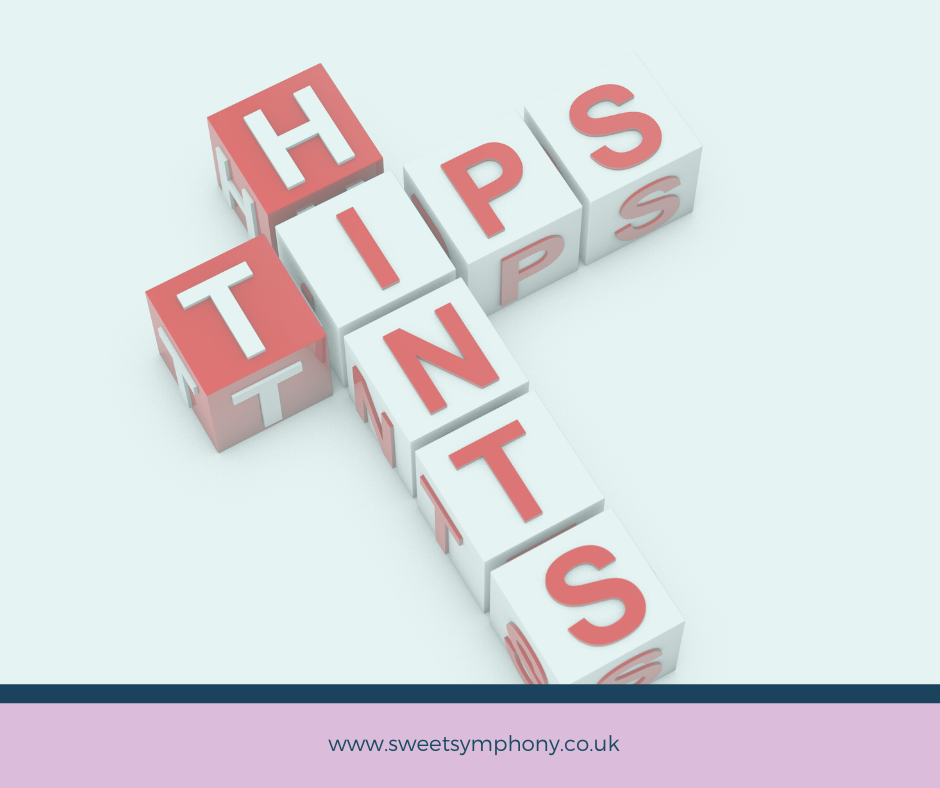
“I forgot what I had to practise.” How many times have Teachers heard those words? We know that once you leave your lesson, it can be difficult to accurately recall everything your Teacher told you during your time together. You’re so busy trying to take in all of the information given to you that, inevitably, lots of it may be forgotten before you get chance to put it into action.
Weekly Lesson Notes
This is where a great feature of Sweet Symphony tuition comes in – our weekly lesson notes. Each week, all Sweet Symphony Teachers send typed-up lesson notes to each Student (and Parent) after their lesson. This reminds the Student what they worked on during their lesson and also what their Teacher would like them to focus on before their next lesson.
But what about *how* you should practise? There are certain warm-ups and exercises – such as scales & arpeggios – that all Teachers will always recommend you incorporate into your practice routine. These are a great way of warming up your musical brain and getting into “the zone” so you can think musically about the material your Teacher has asked you to practise. Although they may not be as exciting as working on a new piece of music, they serve an important purpose, so working on them is just as valuable as working on a piece.
Make a Note (no pun intended!)
Don’t be afraid to notate your music, if it will help you. We’re not encouraging you to write on every single note-name, or translate every Italian dynamic meaning, but if you make a mistake more than once when practising, perhaps write yourself a note in the music to remind yourself the next time you play it. If, for example, you persistently play a note too low, you might put an arrow going upwards above the note to remind yourself next time that it needs to be played higher. Tricky fingering passages can also be overcome with a few tactical finger numbers written in. Sometimes this can help your brain to process the music a bit faster, and therefore you won’t second guess what you’re playing.
Top tip: Use removable highlighter tabs instead of writing directly on your music. Place these wherever you need a friendly hint – be it fingering, pitch or something else – and write your note on these. Once you’ve mastered this section, you can simply remove the highlighter tab and your music is once again brand-new!
Practice Mode vs. Performance Mode
When it comes to practising, we like to say that we each have 2 modes: Practice Mode and Performance Mode.
In Practice Mode, your aim is to improve your playing and eliminate mistakes. So, if you’re practising and you make a mistake – stop and fix it. This may mean that you only focus on a couple of bars or lines during each practice session, but that’s ok. That’s the point of practice! Your Teacher will always much prefer you to be able to show them one small section of music well-practised and polished rather than an entire piece of music in which there are loads of mistakes and bad habits. On the other side of the coin is Performance Mode.
In Performance Mode, you’re doing just that – performing. You shouldn’t stop and backtrack if something doesn’t go quite to plan. If you make a small slip, try to just carry on. Nobody is perfect and we all make mistakes when performing, but often it’s less about the mistake and more about how you deal with the mistake that’s important. In situations such as recitals or exams, you should be employing Performance Mode.
Take it slow
Generally, Teachers will advise Students to practise slowly and with intent. It is much easier, usually, to play a passage slowly, and you can speed things up once you’re happy you’ve got the hang of it. A metronome can be a really useful tool to help you get to grips with tricky rhythm sections. Try clapping out difficult rhythms before playing them on your instrument. Some Students – for instance, Violin players or Singing Students – may find it beneficial to play in front of a mirror so that they can watch their posture.
One last thing…
Lastly, remember to try and do a little of everything that your Teacher has assigned you that week. You may not get chance to work on everything during every practice session. But over the week you should be hitting all of the areas you’ve been asked to look at. While you’re practising, if you’re confused about anything just make a note – either in the music itself, or on a piece of paper – to remind you to bring it up with your Teacher at your next lesson. Don’t be afraid of asking your Teacher questions – that’s what we’re here for.

